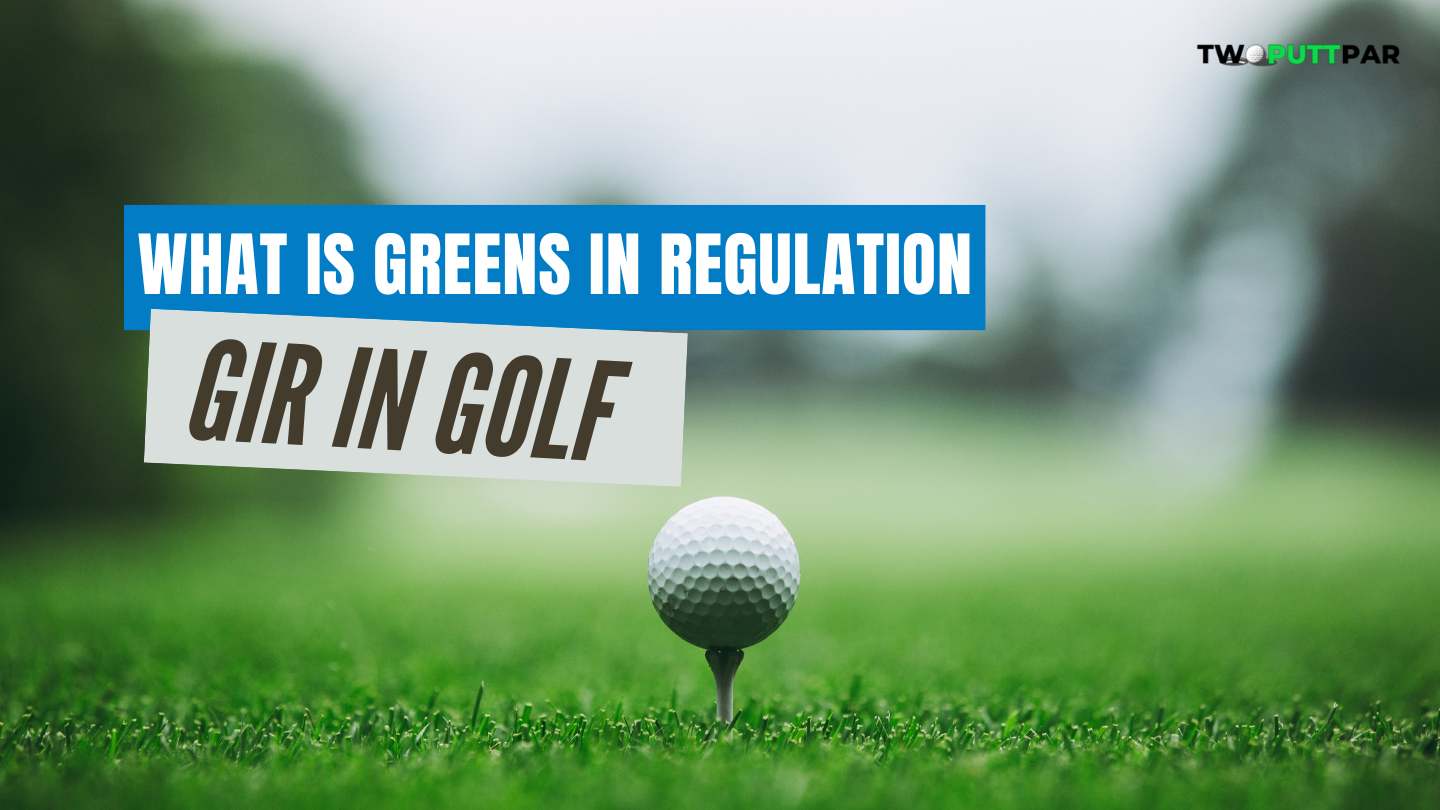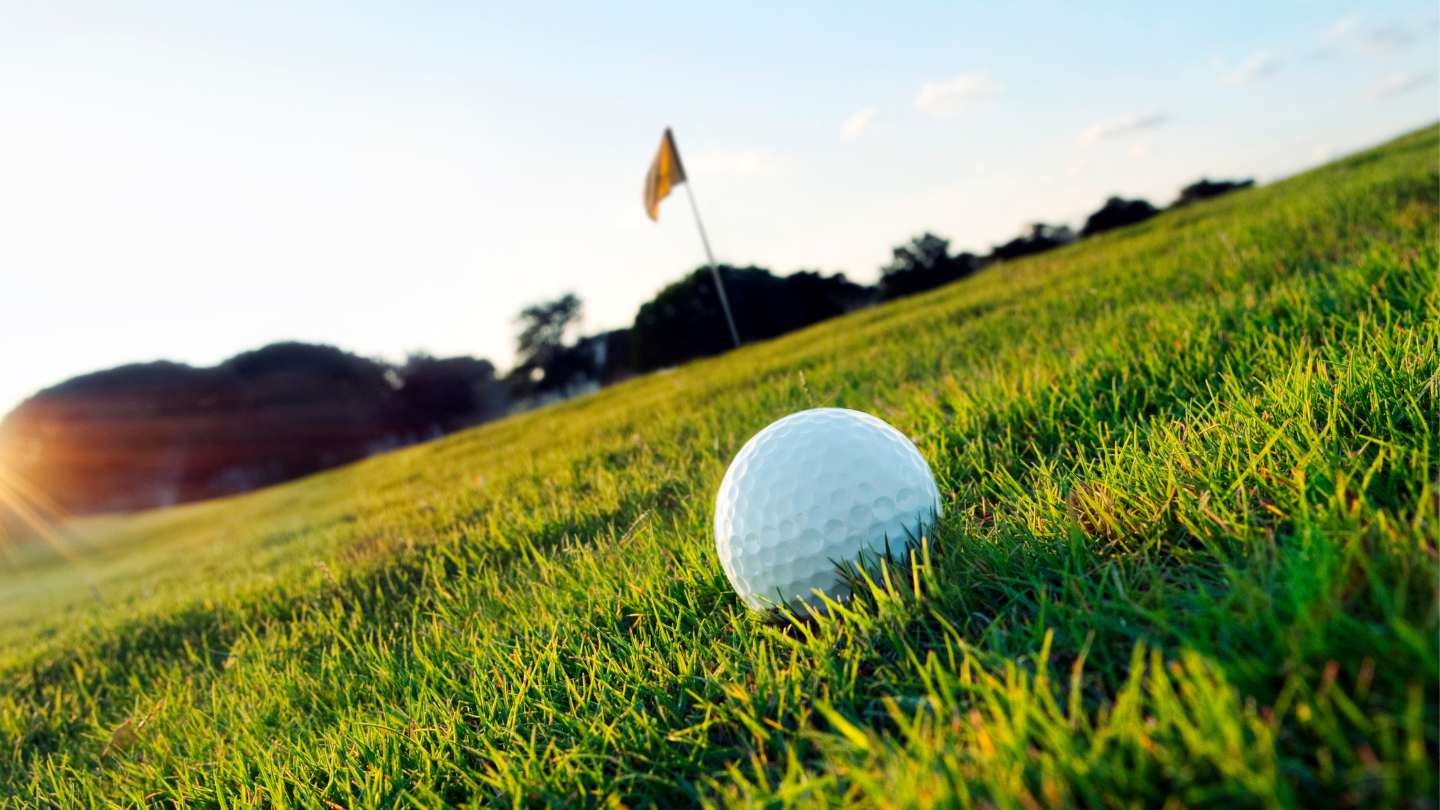
Mid-Handicap golfer who loves to share his rounds and experiences playing courses all around the UK in a hope that it will help others find those hidden gem golf courses.
I seek out golf courses that don’t get the credit they deserve and are often overlooked for the bigger more well known ones.
If you’re new to the sport or just curious about this term, we have got you covered.
In this post, we will be discussing everything you need to know about greens in regulation, also known as GIR.
So let’s dive right into it!
Greens in Regulation (GIR) in golf refers to the number of times a player reaches the green within the prescribed number of strokes, typically two strokes fewer than par.
What Is Greens In Regulation In Golf
Greens in Regulation (GIR) in golf is a statistical measure that records the number of times a golfer’s ball reaches the green within a certain number of strokes, generally two fewer than the hole’s par.
If a player manages to land their ball on the green in one stroke on a par 3, in two strokes on a par 4, or three strokes on a par 5, they have hit a Green in Regulation.
This statistic is often used as an indicator of a golfer’s accuracy and control from the tee and fairway, as well as their ability to set up birdie opportunities.
A higher GIR percentage typically correlates with lower scores and a stronger overall game, making it a key performance metric for golfers at all levels.

When is a Golf Ball Considered on the Green?
A golf ball is considered on the green when any part of it touches the putting surface, regardless of where the rest of the ball may be.
In golf, the ‘green’ is the smooth grassy area at the end of a fairway where the hole is located. When a ball is resting on this area, it is said to be ‘on the green’.
It’s worth noting that it doesn’t matter if the entire ball is on the putting surface or not.
As long as any part of the ball is touching the green, it is officially considered ‘on’, and the golfer can switch to their putter and proceed with the rules that apply to putting.
This rule applies even if the majority of the ball is still in the fringe or rough, but a small section is touching the green.
Does Fringe Count as a Green in Regulation?
The fringe does not count as a Green in Regulation in golf, even if the ball is within puttable distance.
In golf, a Green in Regulation (GIR) is defined by the ball ending up on the actual putting surface within the prescribed number of strokes (two less than par).
The fringe, also known as the collar or apron, is the area of grass that separates the green from the surrounding fairway or rough.
Despite its close proximity to the green, and even though players may choose to putt from the fringe, it does not count towards a GIR.
Therefore, even if your ball is just an inch off the green but still on the fringe, it technically wouldn’t be considered hitting the green in regulation.
This rule holds true regardless of whether you’re playing at a beginner or advanced level. It’s essential to understand this rule as it can impact your strategy and club selection during play.
What is a Good Greens in Regulation Percentage?
A good Greens in Regulation (GIR) percentage for an amateur golfer is generally considered to be around 40%, while professional golfers often strive for a GIR of over 60%.
The Greens in Regulation (GIR) statistic can be a helpful measure of your proficiency in reaching the green within the prescribed number of strokes.
For amateur golfers, hitting the green in regulation around 40% of the time is seen as a solid performance. This means that on an average 18-hole course, you’re landing on the green in regulation on roughly 7 to 8 holes.
However, for professional golfers, the standards are much higher. Professionals usually aim for a GIR percentage of 60% or more, meaning they’re reaching the green in regulation on about 11 holes out of 18. But remember, these percentages are just benchmarks.
The most important thing is to focus on improving your own GIR percentage over time, as this will likely lead to lower scores and more enjoyable rounds of golf.
Tips for Hitting More Greens in Regulation
Hitting more Greens in Regulation (GIR) can be achieved by focusing on improving your iron play, understanding your carry distances, and making strategic choices on the course.
Aim for the Arc
When the target is small, it’s often better to aim for the arc rather than trying to hit a straight shot. This means if you tend to bend the ball from left to right, aim toward the left side of the green.
This strategy helps to maximise the area of the green that your ball can land on, increasing your chances of hitting a GIR.
Club Up and Aim for the Middle
Most amateur golfers miss the green short more often than they do left or right. Therefore, using a club that will carry the ball past the pin, rather than one that will just reach it, can help increase the likelihood of hitting the green.
Additionally, aiming for the middle of the green, rather than going for every pin, is a safer strategy that can lead to more GIRs.
Know Your Distances and Gaps
Understanding your carry distances – how far the ball travels in the air before landing – is crucial for hitting more greens.
This means knowing not only how far you hit each club on average, but also understanding the gaps between your clubs. This knowledge allows you to select the right club for each shot, which can significantly increase your GIR percentage.
Get Your Arms and Body Working Together
Great iron play is about great ball striking, and this can only be achieved consistently when your arms and body are working together in your swing.
Ensuring that your arms and body are in sync can lead to more solid and accurate shots, helping you hit more greens.
Practice on Similar Lies
Finally, practicing on similar lies to those you’ll face on the course can help prepare you for the real thing. If the course you’re playing has a lot of uphill or downhill lies, spend some time practicing these shots on the range.
This will help you become more comfortable and confident when you face them during a round, increasing your chances of hitting the green in regulation.
FAQs
Q: How is GIR calculated?
A: Greens In Regulation (GIR) is calculated by dividing the number of greens a golfer hits in regulation by the total number of opportunities to hit a green in regulation. For example, if a golfer hits the green in regulation on 10 out of 18 holes, their GIR percentage would be 55.6% (10 divided by 18).
Q: Why is hitting more greens in regulation important?
A: Hitting more greens in regulation is important because it gives golfers more opportunities to make birdie or par. When a golfer hits the green in regulation, they have a better chance of avoiding costly mistakes and reducing the number of strokes needed to complete the hole. It is also a key factor in improving a golfer’s overall scoring average and handicap.
Q: What does GIR percentage indicate?
A: GIR percentage indicates the percentage of greens a golfer hits in regulation out of the total number of opportunities. This statistic provides insight into a golfer’s ability to consistently hit greens and gives an indication of their ball striking skills. Higher GIR percentages generally correlate with lower scores.
Q: How can GIR statistics be helpful for golfers?
A: GIR statistics can be helpful for golfers as they provide valuable insight into their performance on the course. By tracking their GIR percentage over time, golfers can identify strengths and weaknesses in their ball striking and adjust their practice and strategy accordingly. GIR stats can also be used to compare performance to other golfers and set goals for improvement.
Q: What is considered a good GIR percentage for an amateur golfer?
A: A good Greens In Regulation (GIR) percentage for an amateur golfer can vary depending on skill level. On average, a GIR percentage of around 50-60% is considered solid for amateurs. However, professional golfers on the PGA Tour often have GIR percentages well above 65%.
Q: How does GIR influence a golfer’s handicap?
A: Greens In Regulation (GIR) can influence a golfer’s handicap by affecting their overall scoring. When a golfer consistently hits greens in regulation, they give themselves more opportunities for lower scores and better handicap differentials. Higher GIR percentages generally lead to lower handicaps.
Q: What is the correlation between GIR and putting?
A: There is a correlation between GIR and putting in golf. When a golfer hits the green in regulation, they have a better chance to make a birdie or par putt. However, even if a golfer hits the green in regulation, they still need good putting skills to hole the putt and score well on the hole.
Q: How can golfers improve their GIR percentage?
A: Golfers can improve their GIR percentage by focusing on their ball striking and accuracy. This includes practicing their iron shots, working on consistency with their swing, and improving distance control. Additionally, paying attention to club selection and course management can also help golfers hit more greens in regulation.
Q: What are some common mistakes that lead to missed greens in regulation?
A: Some common mistakes that lead to missed greens in regulation include hitting the ball off the fairway or into hazards, leaving approach shots short or long, and mishitting the ball with the wrong club. Lack of focus, poor course management, and inconsistent ball striking can also contribute to missed greens.
Conclusion
In conclusion, Greens in Regulation (GIR) is an essential aspect of golf that measures a player’s ability to reach the green within regulation.
It is a crucial statistic for understanding a golfer’s performance and evaluating their strengths and weaknesses on the course.
By hitting more greens in regulation, players have a higher chance of making pars or birdies, ultimately leading to lower scores. As such, it is vital for golfers of all levels to focus on improving their GIR percentage to excel in the game.
Affiliate Disclaimer – As an affiliate, we may earn a commission from qualifying purchases. We get commissions for purchases made through links on this website from Amazon and other third parties.





Leave a Reply